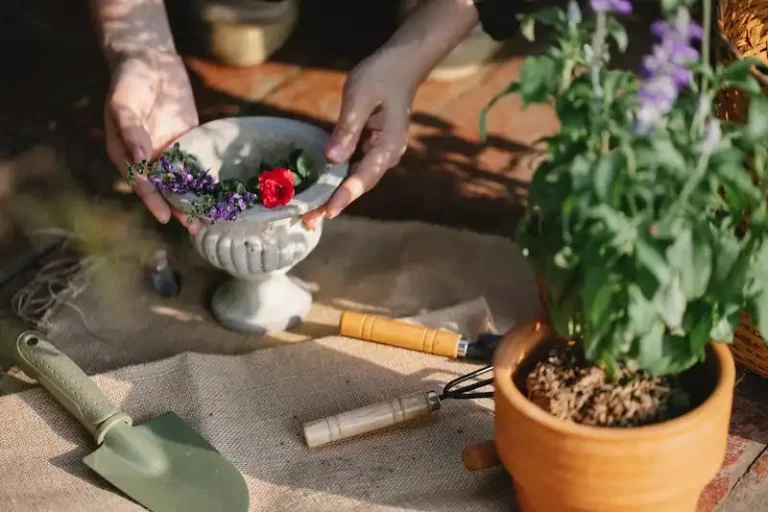Curly endive, or salad–mâche as it is sometimes called, is a leafy vegetable that is often used in salads. It is a member of the chicory family and is closely related to other leafy greens like lettuce, cabbage, and escarole. Curly endive is native to the Mediterranean region, particularly Italy, where it has been grown for centuries.
The name “curly endive” refers to the curly, frizzled leaves that give it a unique appearance. The leaves are green and slightly bitter, with a crunchy texture. Curly endive can be enjoyed raw in salads or cooked in various dishes. When cooked, the leaves wilt and soften, making them ideal for sautéing or adding to soups and stews.
Curly endive is packed with nutrition. It is low in calories and high in vitamins and minerals, making it a healthy addition to any diet. It is particularly rich in vitamin A and vitamin K, as well as several antioxidants. It also contains fiber, which is important for digestive health.
In terms of culinary usage, curly endive adds a unique flavor and texture to salads. It pairs well with other bitter greens like radicchio and frisée, and can be combined with milder lettuces for a balanced salad. Curly endive is also commonly used in classic French dishes, such as frisée salad with lardons and a poached egg.
If you’re new to curly endive and unsure how to prepare it, there are plenty of resources available online with tips and recipes. Many articles and websites offer step-by-step instructions on how to clean, chop, and store curly endive. Some recommend wilting the leaves in a hot pan with a little oil or butter, while others suggest keeping it raw and using it as a base for other ingredients.
In conclusion, curly endive is a versatile and nutritious leafy green that can be enjoyed in a variety of dishes. Whether raw in salads or cooked in soups and stews, it adds a distinct flavor and texture to any meal. So next time you’re at the grocery store, give curly endive a try and discover its unique taste for yourself!
Escarole and Curly Endive Serving Tips
When it comes to preparing and serving escarole and curly endive, there are several ideas you can try to make the most out of these leafy greens. Here are seven tips to help you bring out their unique flavors:
1. Serve Them Raw: Both escarole and curly endive can be enjoyed raw, either on their own or mixed with other salad greens. Their slightly bitter taste adds a nice accent to salads.
2. Wilt Them: If you prefer a softer texture and milder flavor, you can wilt the escarole and curly endive by sautéing them in a bit of garlic and olive oil. This method reduces their bitterness and brings out a more savory taste.
3. Toasted Lardons: Add some crispy bacon or pancetta lardons to your escarole and curly endive salad for an extra layer of flavor and texture.
4. Make a Sorrel Sauce: Curly endive pairs well with sorrel, a tangy herb that adds a punch of lemony flavor. You can make a delicious sorrel sauce to drizzle over your prepared greens.
5. Try Them in Soups and Stews: Both escarole and curly endive can hold up well in hot dishes like soups and stews. Their sturdy leaves won’t wilt easily and will add a nice depth of flavor to your dish.
6. Store Them Correctly: To keep your escarole and curly endive fresh, store them in the refrigerator in a plastic bag or container. It is best to use them within a few days of purchase.
7. Grow Your Own: If you are a fan of these leafy greens, consider growing your own escarole and curly endive. They are relatively easy to grow, and you can have a fresh supply of these delicious vegetables right in your own backyard.
By following these serving tips, you can enjoy escarole and curly endive in various ways, whether raw or cooked, and make the most out of their unique flavors and health benefits.
How to tell curly endive and escarole apart
Curly endive and escarole are both leafy greens that are often used in salads, but they have some key differences that can help you tell them apart. Here are some suggestions for how to distinguish between the two:
1. Growing location: Curly endive is typically grown in the outdoors, while escarole is often grown indoors or in greenhouses.
2. Leaf shape: Curly endive has narrow, curly leaves that curl inward, while escarole has broader, smoother leaves that are less curly.
3. Bitterness: Curly endive has a more pronounced bitterness compared to escarole, which has a milder taste.
4. Vitamin content: Curly endive is higher in vitamin C and K, while escarole contains more vitamin A.
5. Serving suggestions: Curly endive is often enjoyed raw in salads, while escarole is more commonly cooked or used in soups and stews.
6. Flavor partners: Curly endive pairs well with citrus flavors like lemon, while escarole goes well with garlic and lardons (bacon cubes).
7. Frost tolerance: Escarole is more frost tolerant than curly endive, which can be damaged by frost.
By keeping these differences in mind, you can easily tell curly endive and escarole apart and choose the right leafy greens for your recipes. Whether you’re growing them on your own or buying them from a local farmer’s market, knowing how to differentiate between these greens can help avoid confusion and ensure you get the flavors and nutritional benefits that you’re looking for.
For more information about growing curly endive and escarole, how to prepare them, and related recipe ideas, we recommend checking out articles written by Stephen Albert on the website www.growerssite.com. Stephen provides valuable insights and helpful tips for growing and serving these leafy greens.
Curly endive or frisée
Curly endive, also known as frisée, is a type of leafy green vegetable that is often used in salads. It is characterized by its curly, frilly leaves and slightly bitter flavor. Curly endive is rich in vitamins and minerals, making it a nutritious addition to your diet.
Curly endive is related to other bitter greens, such as dandelion greens and escarole. It can be served raw in salads or cooked in dishes like wilted greens with bacon lardons. When buying curly endive, look for fresh, crisp leaves that are free from wilting or discoloration.
If you want to grow your own curly endive, it is best to plant it in early spring or late summer, as it prefers cooler temperatures. It can be grown outdoors in a sunny location, although some growers also recommend growing it in a partially shaded area to prevent the leaves from becoming too bitter.
To prepare curly endive, simply wash the leaves and spin them dry. You can then toss them in salads for an added crunch and bitterness. Curly endive can also be used as an accent to other greens, such as lettuce or cabbage.
Some suggestions for preparing curly endive include mixing it with other greens in a salad, sautéing it with garlic and lemon juice, or adding it to soups and stews for extra flavor and nutrition. The leaves can also be blanched or used as a garnish for various dishes.
In conclusion, curly endive or frisée is a versatile vegetable that adds a unique flavor and texture to salads and other dishes. Whether you grow it yourself or buy it from the store, you can enjoy its nutritional benefits and use it in a variety of recipes.
Escarole
Escarole, also known as chicory-endive or cichorium endive, is a leafy green vegetable that belongs to the chicory family. It is a popular ingredient in many dishes and is widely used in Mediterranean cuisine.
Escarole has broad, pale green leaves that may have a slightly bitter taste. It is often used raw in salads but can also be cooked in a variety of ways. To prepare escarole, you can sauté it or wilt it by briefly cooking it in a pan with some oil or butter. Some people also like to grill or roast escarole to bring out its natural flavors.
Escarole is packed with nutrition and is a good source of vitamins A and K. It is also rich in fiber, which is important for digestive health. The vegetable is low in calories and is often recommended as part of a healthy diet.
When choosing escarole, look for fresh, crisp leaves that are free from blemishes. You can store escarole in the refrigerator for up to seven days. Before using it, make sure to wash the leaves thoroughly to remove any dirt or debris.
Escarole can be served alone as a side dish or incorporated into salads, soups, or stews. It adds a crunchy texture and a mild bitterness to dishes. The leaves can also be used in place of lettuce in sandwiches or wraps.
In addition to its culinary uses, escarole is also grown for its ornamental value. The plant has attractive white or yellow flowers that bloom in the summer. Some varieties of escarole have curly leaves, which give the plant a decorative appearance.
If you have never tried escarole before, give it a chance. It might become a new favorite in your kitchen. Feel free to experiment with different recipes and cooking methods to discover your own preferred way of enjoying this versatile vegetable.
In conclusion, escarole is a nutritious and delicious leafy green that can be enjoyed in a variety of dishes. It is easy to prepare and can complement a wide range of flavors. Whether you use it in salads, soups, or main course dishes, escarole is sure to add a fresh and vibrant element to your meals.
How to choose curly endive and escarole
Curly endive and escarole, also known as chicory, are leafy vegetables that belong to the same family as lettuce. They are often used in salads and have a slightly bitter taste. Here are some tips on how to choose the best curly endive and escarole:
| Appearance | Look for curly endive and escarole with fresh, crisp leaves. Avoid any wilted or yellow leaves, as they indicate that the vegetables are not fresh. |
| Color | Choose curly endive and escarole with vibrant green leaves. Avoid any vegetables with dark spots or discoloration, as they may be overripe or damaged. |
| Size | Both curly endive and escarole can vary in size, but they should have compact heads. Avoid any vegetables that are overly large or have open, loose leaves. |
| Texture | The leaves of curly endive and escarole should be crisp and firm. Avoid any vegetables with wilted or mushy leaves, as they are past their prime. |
| Taste | Curly endive and escarole have a slightly bitter taste, but it should not be overpowering. If possible, taste a small piece to ensure that it is to your liking. |
When you bring curly endive and escarole home, it is important to store them properly to maintain freshness. Place them in a plastic bag and store them in the refrigerator. They should stay fresh for up to a week.
Curly endive and escarole can be prepared in various ways. They can be eaten raw in salads, sautéed or braised, or used as a bed for cooked meats. They pair well with lemon and garlic, and can also be used in soups and stews.
If you are interested in growing your own curly endive and escarole, there are numerous articles and resources available on the topic. Stephen R. Gliessman’s “Growing Food in a Hotter, Drier Land” and the University of California’s “Chicory-Endive-Escarole” are great starting points for information on growing these vegetables.
In conclusion, choosing curly endive and escarole is easy when you know what to look for. By selecting vegetables with fresh appearance, vibrant color, compact size, crisp texture, and a slightly bitter taste, you can ensure that your dishes will be flavorful and delicious.




